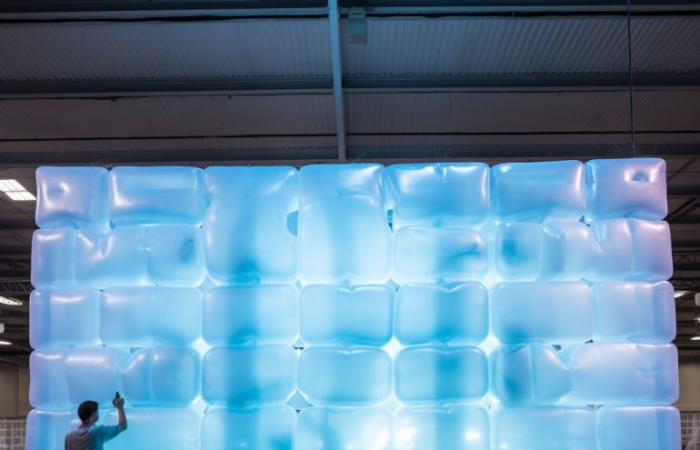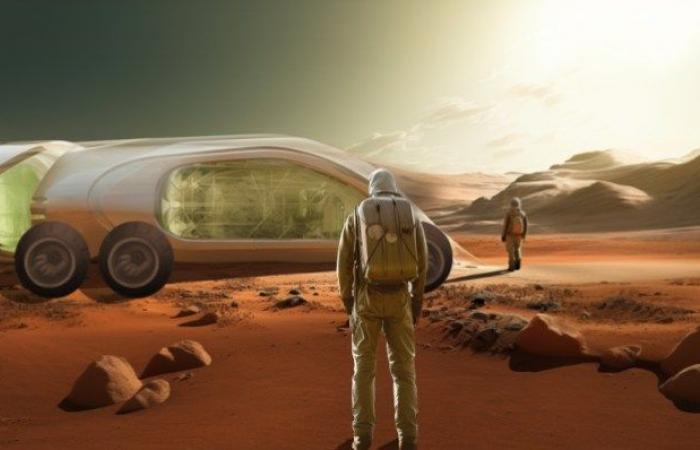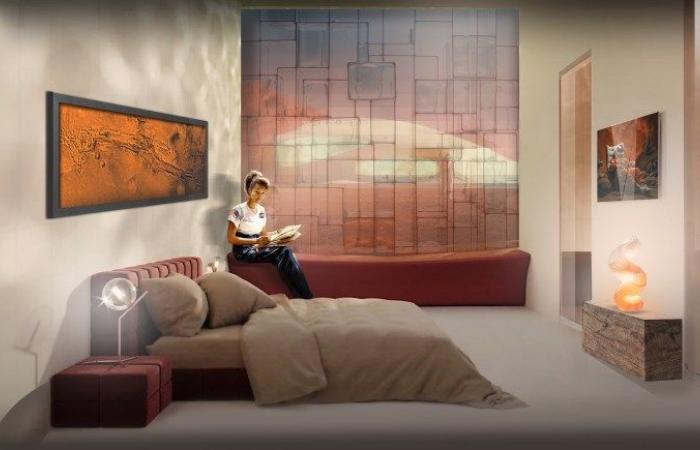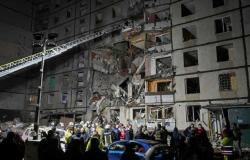Going to space – let alone staying there – is expensive and dangerous. It takes about a million {dollars} to transport half a kilogram (1 pound) of material to the Moon, and even more to Mars. And along the way, all human astronauts must survive radiation, extreme variations in pressure and temperature, and random micrometeorites hurtling through the void like bullets.
According to a growing program at NASA, the answer is to grow mushroom constructs on the Moon – and then beyond.
“You can’t take boards or bricks,” says Chris Maurer, founder of Red House, a Cleveland-based construction company partnered with NASA to solve this alien development puzzle. “So what are you going to build with?” And it is very expensive to take already built habitats.
He says the idea most researchers are studying is called ISRU – In-Situ Useful Resource Utilization – “meaning you build with what you have there, and what you have there will possibly be being water and regolith (lunar dust). “.
It turns out that these meager resources are more than enough to feed certain fungal species, which can then be transformed into surprisingly strong construction materials that are stronger than concrete and have many additional benefits.
The magic of mycotecture
The effort to harness such mycotecture – called the Mycotecture Off Planet Structures at Destination Project – recently won a Section III contract with NASA, meaning it will receive the funding needed to continue. In other words, the mushrooms are ready to take off.
Even though the implications of this mushroom technology are now literally astronomical, creating the material itself is surprisingly easy. Mycotecture – the use of mushroom-based materials for constructive purposes – is a growing trend in recent years and has been used in many areas, from artwork to design to the “biocycling” of waste.
Maurer’s company has already applied it to address challenges here on Earth. In Namibia, for example, Redhouse runs a program that uses mycomaterials to build housing for climate refugees while simultaneously growing edible mushrooms to address food shortage concerns.
When Lynn Rothschild, an astrobiologist and project manager at NASA, became aware of these and other myco-efforts, she recognized their potential applications for space exploration. Since then, mycotechnology has gained the support of prominent NASA figures such as geologist Jim Head, who once trained astronauts for the Apollo lunar exploration program, and Apollo 15 commander David Scott, the one of only 12 people to ever walk on the moon.
On Earth, Maurer’s team makes myco “bricks” by simply feeding various species of fungi organic matter from plants or development waste. The resulting material is then heated and compacted into blocks that are stronger than concrete and significantly better for the environment.
This process, however, is somewhat reversed when it comes to space.
“The pressure doesn’t really matter on the Moon or Mars because gravity is much less and the forces of development are going to be outward because you’re in a pressurized spacecraft,” Maurer explains. “Instead of gravity acting on your building, air escapes from it. So you don’t need a good material for compressive strength, but for succesful tensile strength to maintain that pressure. ” In other words, in space, buildings do not collapse, but collapse.
The plan is to start with an inflatable mold in which mycomaterials are grown using a combination of fungal spores and algae from Earth, which will feed on the water and regolith already present on the moon.
“That way you can use a little bit of living biology and nutrients,” says Maurer, “and then you can add a lot of water when you get there from the underground ice. This ends up being about 90% of the mass of the remaining building, so you’ve gotten most of your materials at home, without needing to propel heavy materials from Earth.
“It was a huge advantage from the start. NASA said: “It will save us billions of {dollars}, so we like it. »
Astronomical benefits
As research began, other key benefits were quickly discovered. It turns out that the mycomaterial is also incredibly effective at insulating from the cold as well as protecting against micrometeorites and deadly radiation.
“Radiations are the main obstacle to any manned mission,” explains Maurer. “That’s why we haven’t gone back since the ’70s – because it’s too dangerous to send people. At the time, we were quite cavalier because we wanted to beat the Soviets to the Moon, but the astronauts were in great danger all the time. “A single burst of solar wind, he explains, would almost certainly have caused cancer.
The melanin in mushrooms, however, has been shown to be very effective in protecting cells and DNA from harmful electromagnetic radiation, while the mycommaterial also slows and scatters particle radiation through a mechanism that has yet to be determined. Whatever the trigger, Maurer says NASA researchers found they could block more than 99 percent of radiation with just 8 cm (3 inches) of material — a dramatic improvement over regolith, which takes 3 meters (10 feet) to provide the same selection. safety level.
In addition, it is estimated that these housing constructions could develop quite quickly, over approximately 30 to 60 days. The process will involve the landing of a sealed package, including a toilet and kitchen sink, whose interior is inflated by onboard gases while its rubber shell is filled with water and a mixture of spores fungi as well as autotrophic algae which develop and harden according to the shape of the mold. This rapid preparation may not be so important initially, as the first structural molds would be set up remotely long before humans follow suit, but Maurer’s team envisions how they might be deployed to grow “puppy tents” (small tents) in just a few hours. for people exploring alien landscapes.
Although tests on Earth have yielded impressive results, it is still possible that unforeseen challenges will arise once the idea is introduced to the extreme environment of space.
“Generally speaking,” admits Rothschild, “there are technological risks. Will the construction be strong enough? Will this really provide the insulation we think? What will the properties of the material be? Will it really grow well? NASA may not know until the first large-scale constructions are placed on the Moon.
But we will still have to wait at least a decade. Currently, the project is preparing to send proof-of-concept models to the sky with the Starlab space station scheduled for launch in 2028. A collaboration between Voyager, Airbus, Virgin, Hilton and other commercial partners and government, Starlab will become the primary station in low Earth orbit after the current International Space Station (ISS) is decommissioned in the early 2030s.
Precisely what the first extraterrestrial myco-projects will look like is still under discussion. According to Maurer, it could be an internal panel “that will be a science experiment as well as being an interior design set up”, simple furniture like a sofa or a chair, or even a bed acting like “a Hilton hotel in the sky”, which wraps sleepers to keep them in place in weightlessness. Around the same time, the program will send a small-scale model to the Moon for on-site testing, followed by a full-scale build a few years later. After that, Mars.
![Artistic rendering of a room in space [Courtesy of redhouse studios]](https://euro.dayfr.com/content/uploads/2024/09/29/17b539af2a.jpg)
Constructions that are being built
“It’s almost like science nonfiction,” says Jonathan Dessi-Olive, assistant professor at the David R Ravin School of Structure and the University of North Carolina at Charlotte and director of the MycoMatters Lab. “They are doing real biology to imagine a potential future. »
He agrees that the self-propagating and radiation-safe qualities make mushrooms ideal for colonizing the low-resource, high-radiation landscapes of Mars and the Moon, saying of the NASA project: “They work to have [structures] grow alone through multi-organism cooperation, which is super exciting.
“I hope the government sees the need for this research not only for space exploration, but also here on Earth. »
Maurer, who is currently engaged in a variety of myco-projects, here and skyward, says there has been a significant learning curve in applying what he had gleaned from working with mushrooms on land to the he extreme environment of space, where “the building pushes outwards”. instead of trying to go down.”
That’s strange enough, he says, but you also have to take into account the boiling point of the water. “Without pressure, even at subzero temperatures, water boils. Water is an integral part of the program, so pressure, temperature and gas/nutrient exchange must be very precise.
He shakes his head and laughs.
“It’s not quite rocket science, but it’s close. »








